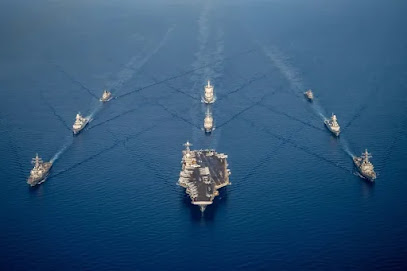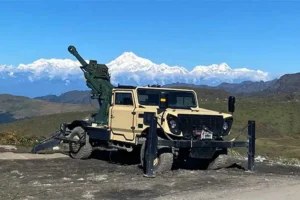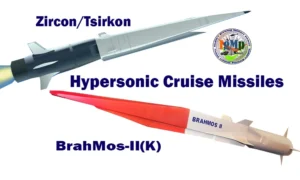Source : The EurAsian Times
 |
| NATO ships train with @USSHARRYSTRUMAN Carrier Strike Group in the Mediterranean, demonstrating the interoperability and strength of the Alliance’s maritime force – Twitter |
Among the fallout over China’s highly “provocative and threatening” military exercises surrounding Taiwan, following US House of Representatives Speaker Nancy Pelosi’s visit to the island nation, is the increasing concerns by the NATO countries over the security situation in the Indo-Pacific.
Supposed to be focusing mainly on the Atlantic, the NATO navies are now expected to be more visible and active in the Indian and Pacific Oceans, along with their “partner countries” like Australia and Japan.
NATO, it may be noted, has links with its “Partners across the Globe” in ensuring what it calls “cooperative security.” Prominent Indo-Pacific “partners” are Australia, Japan, New Zealand, and South Korea.
With China’s rise and North Korea’s nuclear/missile proliferation, NATO formalized in December 2020 the so-called “NAC (North Atlantic Council) +4 meetings”, involving these four countries at the ministerial and official levels.
For instance, in May 2022, a meeting of the NATO Military Committee in Chiefs of Defense session with Australia, Japan, the Republic of Korea, and New Zealand was held at NATO Headquarters in Brussels.
And most importantly, the last NATO summit in June witnessed the participation for the first time of the heads of the governments of these four Indo-Pacific countries.
Of course, NATO’s concerns over China are not exactly a new development. These predated even the invasion of Ukraine by Russia, whose foremost ally happens to be China at the moment.
The NATO 2030: United for a New Era report clearly stated that “NATO must devote much more time, political resources, and action to the security challenges posed by China—based on an assessment of its national capabilities, economic heft, and the stated ideological goals of its leaders.” Accordingly, NATO summits in 2021 and 2022 took note of this theme.
The 2022 Strategic Concept that was adopted at the Madrid Summit, 29-30 June 2022 (NATO 2022 – Strategic concept) officially designated China as a “systemic challenge” and pointed out how China’s “stated ambitions and coercive policies challenge [NATO’s] interests, security and values,” adding “China is opaque in implementing its military modernization and its publicly declared military-civil fusion strategy. It is also cooperating militarily with Russia.”
Incidentally, the interest of NATO members in the Indo-Pacific has not manifested just in words but in actions. In 2021, NATO members sent 21 warships into Asian waters, where they conducted joint operations with all the regional navies worried over the rising Chinese belligerence.
The most important show of force was said to be the seven-month (May–December 2021) voyage of British Carrier Strike Group 21 (CSG21), based on the new HMS Queen Elizabeth aircraft carrier and its escort of two Royal Navy destroyers, two frigates, two support ships, and a nuclear-powered submarine.
It led to a Freedom of Navigation Operation (FONOP) through the South China Sea, prompting Beijing to put its Navy on red alert. But it was also an alliance effort. British naval forces conducted exercises in the region along with France, Japan, Singapore, and the US.
The task force included the US Navy destroyer USS The Sullivans (DDG-68) and US Marine Corps squadron VMFA-22 (known as the Wake Island Avengers), flying F-35B Lightning II fighters from the British carrier.
France has also sent warships through the Taiwan Strait. French President Emmanuel Macron considers China the most significant challenge in the Indo-Pacific region. All told, France has territories in the Pacific and Indian Oceans that are home to 1.6 million citizens and an EEZ of nine million square kilometers.
It permanently deploys 7,000 military personnel, 20 maritime vessels, and 40 aircraft across its sovereign possessions. Paris understands that these forces are spread thin as tensions rise with China’s push for influence among the small Pacific island states. The regular presence of the French Navy in the South China Sea is seen as a contribution to a broader allied effort to undermine Chinese unilateralism.
In 2021, the deployment of the French SSN Emerald and the amphibious exercises conducted with the United States, Japan, and Australia were tangible actions in this regard.
Similarly, France’s carrier strike group, built around the nuclear-powered Charles de Gaulle, operated with the Indian Navy in the Indian Ocean last year after conducting dual carrier flight operations with the USS Dwight D. Eisenhower CSG in the Arabian Sea.
Incidentally, a 2022 parliamentary report recommends doubling the number of patrol vessels in New Caledonia and Polynesia, creating a corvette program to provide more combat capability, and acquiring amphibious vessels for power projection in the Indo-Pacific.
Germany is also turning its attention to the Indo-Pacific region. In fact, experts considered it to be the most significant naval deployment from Europe to the Indo-Pacific last year – the German frigate Bayern’s sojourn.
The German government’s “Policy guidelines for the Indo-Pacific region” released in 2020 endorsed the concept of the “Indo-Pacific” for the first time. They reflected “the negative evolution of China-Germany relations and the growing discontent vis-à-vis China throughout Europe over its management of the Covid-19 pandemic, as well as the growing dependency on China for supplies of critical goods”.
Berlin has expanded bilateral relations with Australia and held security and foreign policy consultations with Canberra and Tokyo.
The Netherlands is the fourth NATO country that has adopted a strategy for the Indo-Pacific region. The Hague advocates for a more assertive approach to balance and restrain China and to speak out “more often and more forcefully” about the breaches of international law in the Indo-Pacific.
To back up its rhetoric, the Dutch government did send, in May 2021, the frigate HNLMS Evertsen to accompany the UK Carrier Strike Group on its mission to the Pacific.
According to Hans Binnendijk, a distinguished fellow at the Atlantic Council and a former senior director for defense policy on the US National Security Council; and Daniel S. Hamilton, a senior nonresident fellow at the Brookings Institution, a senior fellow at Johns Hopkins University’s School of Advanced International Studies and a former US deputy assistant secretary of state, there are many strong reasons why NATO’s areas of concern now go beyond the Atlantic to the Indo-Pacific.
And these are precisely China-centered.
The most noteworthy is the worry that Chinese technological advances and infrastructure investments create dependencies with direct security implications for NATO. Chinese investors are feared to target Europe’s strategic assets, infrastructures, and research and development networks.
“For example, Chinese purchasing strategic ports in allied countries could complicate allied military mobility and reinforcement. Chinese purchases of tech companies can generate defense-related supply chain dependencies.”
To address this threat, it is argued that allies can explore “deeper coordination under Article 2 of the North Atlantic Treaty”, an underutilized provision that commits them to promote “conditions of stability and well-being” and to “encourage economic collaboration.”
Article 2 offers a frame through which allies could work to enhance the screening of foreign investments in security-related infrastructure, companies, and technologies, as well as other steps to protect individual allied nations from security-related dependencies on China.
This endeavor embraces the need to stand against China’s challenges to NATO’s commitment to a free and open global commons, which, in turn, includes maritime passages in the Indo-Pacific through which the vast majority of Europe’s trade with Asia flows but is contested by China.
“China’s aggressive territorial claims in the South and East China seas and its threats to the integrity of Taiwan present real risks of conflict. Critical sea lanes of communication, maritime shipping, and European commercial interactions with China — and with Asia more broadly — would be completely disrupted in such situations.
The interests of various European allies in the Indo-Pacific would be at risk. Opportunities would be created for Russia, as US forces might not be available to reinforce European allies against a simultaneous Russian military challenge adequately.
European allies would quickly need to fill those gaps. They need to plan how they would do so”, runs the argument.
However, this does not mean that the NATO countries are prepared to declare China as an adversary like Russia openly. They want to lay a “foundation of deterrence (that) must be strengthened beyond any doubts of its integrity if peace is to be preserved in the Indo-Pacific.”
It is argued that continued NATO naval deployments to the region will be the key to that foundation.








